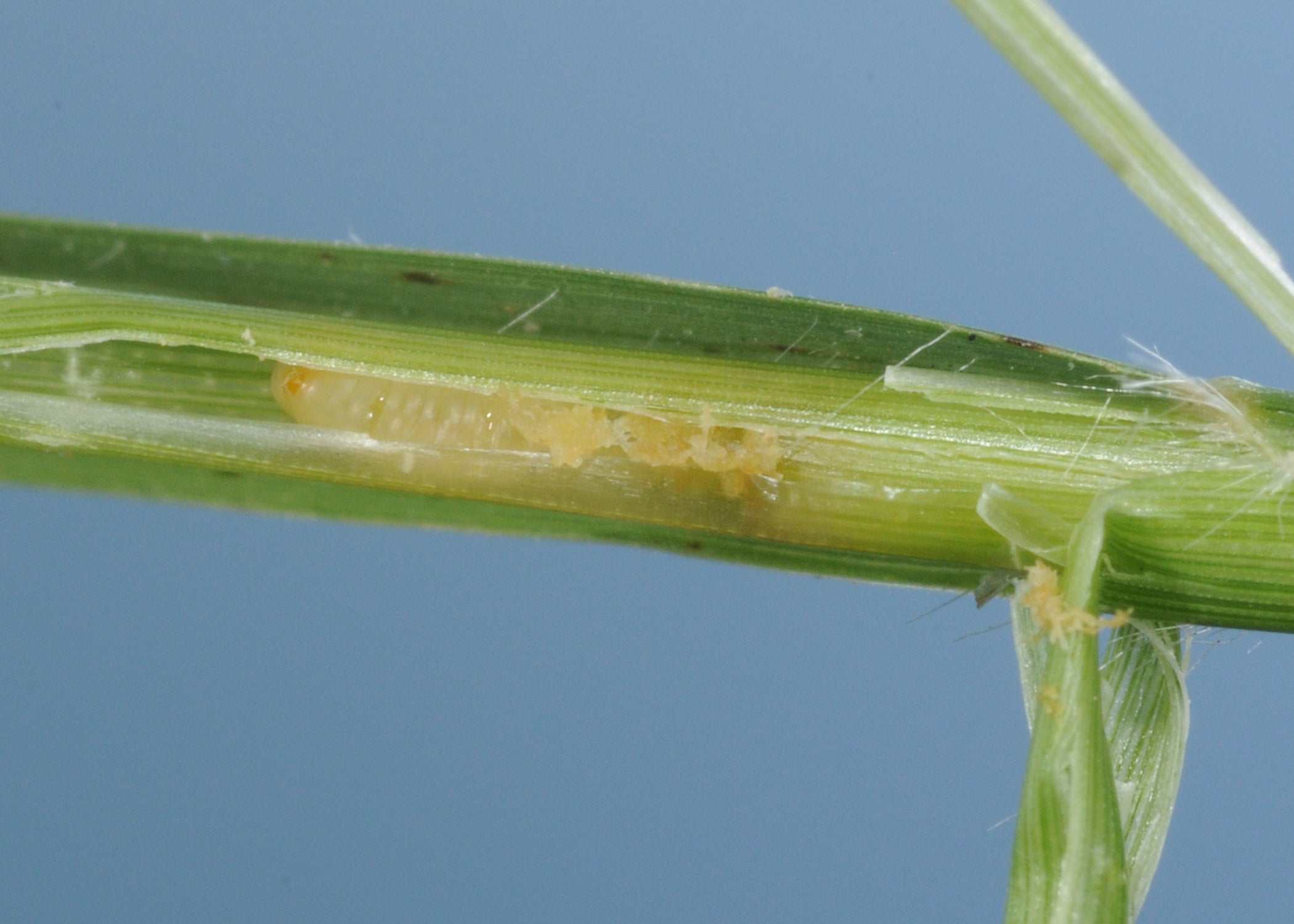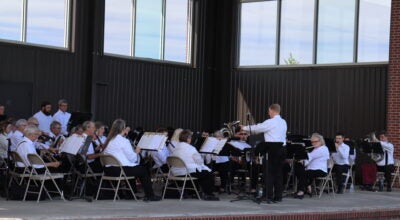Bermudagrass stem maggot is fairly new pest of pastures
Published 3:24 pm Saturday, July 30, 2022

- MAGGOT -- The legless, white larvae of the Bermudagrass stem maggot bore into the growing shoot tips of grass, killing it. (Photo by MSU Extension Service/Blake Layton) Alt text -- A white larvae can be seen inside a peeled back grass stem. ###
By Bonnie Coblentz
MSU Extension Service
STARKVILLE, Miss. — Following last year’s significant fall armyworm outbreak, hay producers should be careful not to overlook another important pest — the Bermudagrass stem maggot — while watching for armyworms.
While farm armyworms attack hay fields, home lawns, golf courses and more, the non-native Bermudagrass stem maggot is primarily a pest of hay fields.
Blake Layton, an entomologist with the Mississippi State University Extension Service, said the Bermudagrass stem maggot is a relatively new pest, and many growers have not gotten used to dealing with it yet.
“These little flies can stop a field from growing, or more commonly, cause reduced growth and yield, and the damage is easy to overlook until it is too late,” Layton said. “Those growing Bermudagrass hay need to learn to recognize Bermudagrass stem maggot damage and make a point of checking fields for damage.”
Bermudagrass stem maggots do not significantly damage pastures that are being grazed or turfgrass that is cut regularly.
Adults are small flies, about half the size of a house fly, with yellow abdomens. The legless, white larvae cause damage by boring into the growing shoot tip and killing it. Light infestations often go unnoticed and cause relatively low yield losses, but moderate to heavy infestations can cause yield losses ranging from 30% to a complete loss.
“Damage is restricted to the two or three grass blades at the tip of the growing shoot because the larvae do not feed past the first internode,” Layton said. “When viewed from a distance, heavily infested fields look like they have suffered light herbicide injury or experienced a frost.”
Heath Steede, Extension agent in George County, said people with pastures have been dealing with Bermudagrass stem maggots for years.
“I’ve never seen stem maggots be as bad as armyworms can get, and what I’ve observed is that if somebody sprays their hay fields regularly for armyworms, that seems to help with the stem maggots as well,” Steede said.
This pest is not a problem in home yards that are mowed regularly.
Layton said there is a key to dealing with Bermudagrass stem maggot: The decision on whether to spray for the pest usually must be based on the level of infestation experienced in the previous cutting of hay.
“This is vastly different from how treatment decisions are made on most other crops,” he said.
Treatment thresholds are not well researched, but if 10-15% of stems in the previous hay cutting were damaged, it is time to treat.
“Pyrethroid insecticides work well on adults, but treatments must be applied shortly after the grass is cut. This means 5 to 7 days after cutting, or as soon as the field begins to green up again,” he said.
The goal of treatment is to kill adult flies before they can lay eggs on new grass shoots. In fields with a heavy infestation in the previous cutting, consider making two sprays, about 5 to 7 days apart.
“Infestation levels increase with each cutting if left untreated,” Layton said. “If infestations become so heavy that they stop a field from growing, the best response is usually to cut the field and start over, and to apply two well-timed sprays on the next cutting.”
“If you get a couple weeks into a growth cycle and begin to notice damage, it is still worth spraying at that point,” Layton said.
Find more information on the identification, scouting and control of stem maggots on the MSU Forage Insects website, http://extension.msstate.edu/agriculture/forages/insects-forage-pests.





